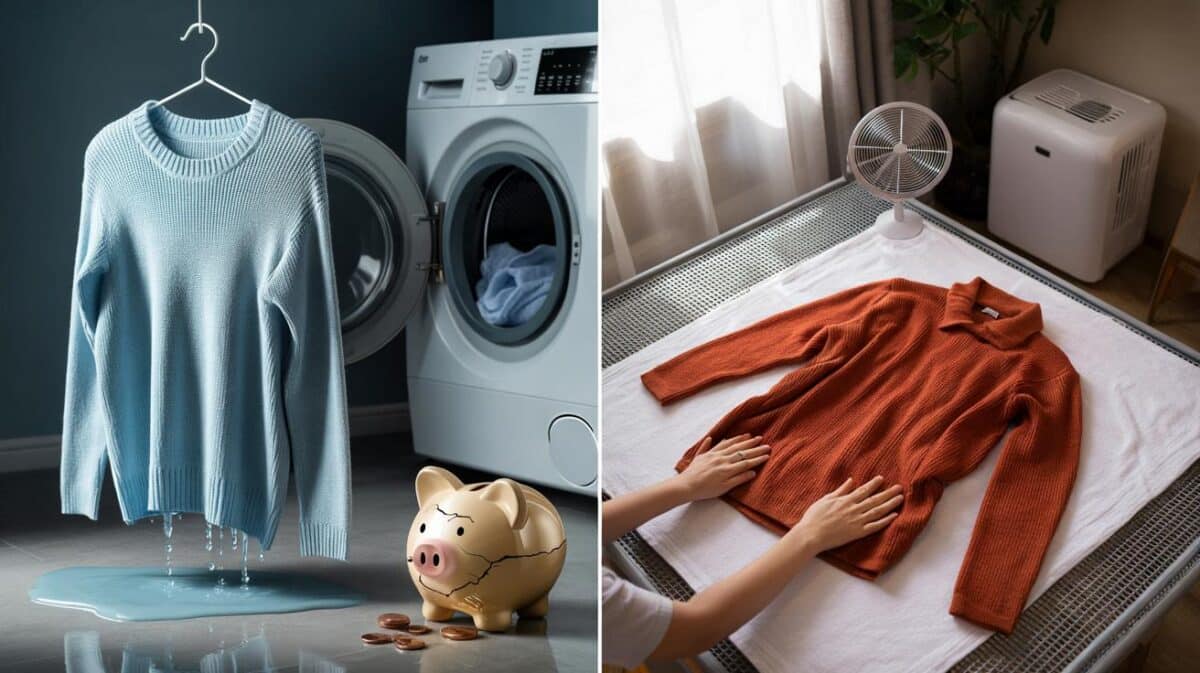Colder evenings pull families closer to the hearth, and dogs close to anything soft and warm. Many owners now notice puzzling behaviour around forbidden zones, from the sofa to the kitchen counter. What looks like stubbornness often comes from blurred rules at home. Here’s how to spot the signals and reset the ground rules without a row.
Signs your dog doesn’t grasp the rules
The sofa test
A dog that hops onto the sofa the minute you leave the room is not staging a coup. It is following a pattern that pays. Clues appear in the morning: warm dents in cushions, a patch of flattened fabric, fine hairs on the throw, or a damp nose print near the arm.
Watch what happens when you walk in. If your dog climbs down slowly, averts the eyes, or pauses mid-descent, it is not admitting guilt. It shows uncertainty about the boundary. The rule exists only when you are present—and only sometimes.
Shifty body language
Confusion wears a dog’s body like a billboard. Look for head turns, slow wags low to the ground, lip-licks, or a gentle yawn when you say “off”. These signals suggest pressure and doubt, not defiance. A dog that truly understands a rule responds quickly and confidently, without the hedging.
Rules that fade at thresholds
Doorways trigger lapses. A dog that sits at the kitchen door on Tuesday may shoulder through on Wednesday if the bin smells irresistible. The same goes for bedrooms, stairs or a child’s play area. When success depends on your mood or attention, your dog learns the rule is optional.
For a dog, a fuzzy rule is a negotiable rule. Clarity beats any clever trick or stern voice.
How mixed messages start at home
Sometimes yes, sometimes no
Weekend cuddles on the sofa, weekday bans. A guest coos “come up”, you ask “down”. One person laughs at paws on the counter after a roast; another scolds the same move a day later. The dog can’t tell Saturday from Monday. It learns to test first, comply later.
Tone, timing and the family chorus
A cue loses power when it changes shape. “Down” meaning “lie flat” on the rug becomes “get off furniture” by the coffee table. Delay adds more fog: if praise or redirection comes ten seconds late, the dog links it to whatever happened last, not to the sofa decision you meant to address.
One house. One rule. One cue. One response. That simple map lets your dog relax and choose well.
Set clear boundaries without conflict
Make the alternative worth it
Boundaries stick when the “yes” spot pays better than the “no” spot. Build a routine around an inviting mat or bed placed where your dog still feels part of family life.
- Choose a thick mat with good grip and a cosy texture.
- Park it near the sofa, not in a cold corner.
- Pay five small rewards for every voluntary choice to settle there.
- Use one cue, such as “bed”, and keep it the same for everyone.
- Fade food gradually, but keep praise and calm touches.
Protect temptation zones
Management saves arguments. Limit opportunities until the new habit forms.
- Block sofa access when you cannot supervise: folded chairs, a lightweight barrier, or a fitted cover.
- Close doors to bedrooms and use baby gates at stairs.
- Clear counters; store food bins and plates out of reach.
- Offer pre-emptive activities at peak temptation times: a stuffed chew after dinner, a snuffle mat during TV time.
Consistency beats intensity: small, steady wins outlast a single stern lecture every time.
A simple two-week reset plan
| Days | Actions |
|---|---|
| 1–3 | Block sofa fully. Introduce the mat. Pay every choice to settle. Short, calm TV sessions with the dog on lead if needed. |
| 4–7 | Reduce barriers when you can supervise. Cue “bed” once, guide to the mat, pay five times across the evening. End the night with a chew on the mat. |
| 8–10 | Randomise rewards. Some settles earn food, others earn a calm stroke or a tossed toy. Keep access blocked when you leave the room. |
| 11–14 | Test with mild distractions: visitors, crinkly food wrappers, a dropped cushion. If the dog heads to the mat, mark and pay. If it hesitates, reset gently. |
Common mistakes that keep rules muddy
Changing the script mid-scene
Using three different cues for the same action drains meaning. Pick one and practice it in calm moments before you need it under pressure.
Correcting the dog, not the environment
Shouting at a dog on the sofa teaches that humans near sofas are risky, not that the sofa is off-limits. Remove the payoff instead. If the sofa never pays, the mat will.
Rewarding after the fact
Handing a treat when the dog finally slumps to the floor may strengthen floor-slumping, not settling on the mat. Pay the first good choice, not the last exhausted one.
When to seek help
Red flags that signal stress
Growling, freezing, or guarding the sofa or bed points to anxiety over resources. Add management now and contact a reward-based trainer or a veterinary behaviourist. Look also for heavy panting indoors, pacing during family time, or frantic greetings that escalate around furniture. These patterns need a plan tailored to your home.
Extra context to guide your next steps
“Management” and “training” work together. Management removes the lure—barriers, closed doors, tidy counters. Training teaches a new habit—settle on the mat, wait at the door, lie down during meals. Most households need both for a month before habits feel automatic.
Rethink the so-called guilty look. That classic side-eye and tucked tail reads as appeasement under social pressure. It does not prove that the dog links last night’s cushion raid to your morning scold. Save your energy for timely feedback and better setups.
Track progress with numbers. Aim for a 5:1 ratio of correct choices to slips each evening. If you drop below that, restore barriers or simplify the scene. A notepad tally, or a jar where you drop five kibble for each mat settle, keeps everyone in the house playing by the same rulebook.
Families often worry that banning the sofa weakens the bond. Affection does not live in upholstery. It lives in routines, games, walks, naps nearby, and calm touch on a dog’s own bed. Clear, steady rules reduce stress for both species and make those quiet autumn nights feel easy again.








